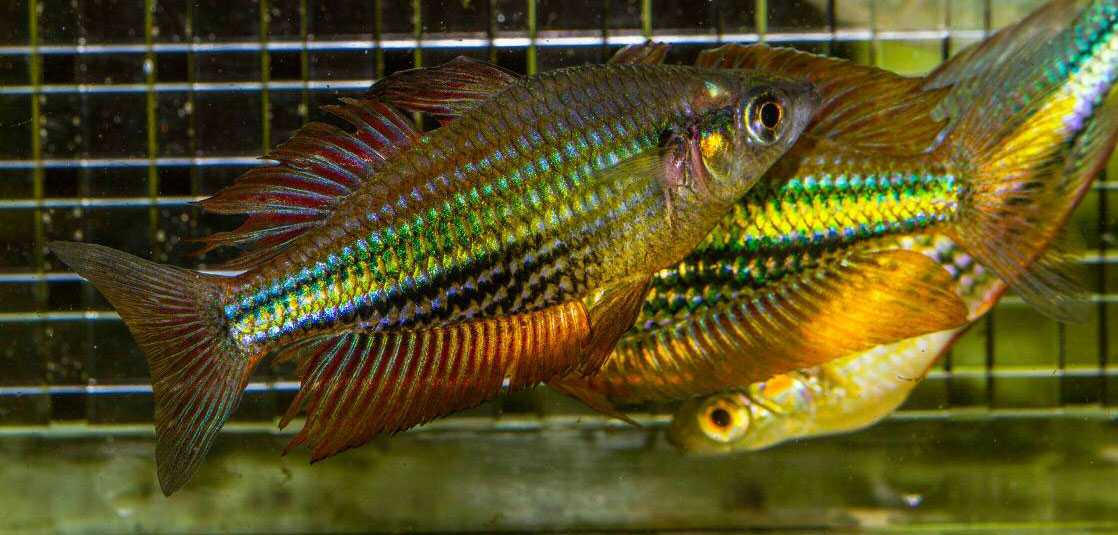Still not described by science, the so-called Running River Rainbowfish is recognized by Australian enthusiasts as beautiful, distinctive—and threatened in its natural habitat by an invasive Eastern Rainbowfish, Melanotaenia splendida, a species suspected to have been released in the wild by reckless aquarium fish hobbyists or collectors. Now, however, progress is reported in building populations of the threatened rainbowfish. Biologists are releasing captive-bred stock back into the wild waters of northern Queensland, Australia.
Supported by crowdfunding donations, including from the readers of AMAZONAS, a breeding program at the University of Canberra has produced “thousands” of Running River Rainbows that are now being released and tracked at two sites in waters not yet invaded by the common Eastern Rainbowfish.
Originally published in the December 2017 edition of Fishes of Sahul ( Journal of the Australia New Guinea Fishes Association), the latest update on efforts to save the Running River Rainbowfish have recently been made publicly available via the website ResearchGate.net. This report documents signs of progress in this multi-year project to establish populations of this endangered fish in the Burdekin River watershed.

A large school of Running River Rainbowfish a month or so after their introduction to the initial release pool
Here are select highlights from the latest update:
- Between November 2016 and January 2017, approximately 2,500 captive-bred fish were released into Deception Creek.
- In May 2017, 2,500 fish were released into Puzzle Creek across four sites
- Snorkel surveys were used to monitor the success of releases.
- The population introduced into Deception Creek appears to be increasing in abundance while spreading throughout the catchment.
- The detection of adults and young of the year within Puzzle Creek is a positive sign for the future of this population. However, there is no information available regarding the movement of fishes throughout Puzzle Creek and no indication of population size or growth.
- The status of fish within Puzzle Creek needs to be assessed and is the current short-term priority.
- The status of Deception Creek suggests that monitoring can be undertaken less frequently, though tracking the spread of rainbowfish throughout the catchment would be quite useful.
- At this point, plans have been made to return in April 2018 to conduct further monitoring of Puzzle and Deception creeks.
You can download the full report, with many more details and images through ResearchGate.
Further Information from AMAZONAS







